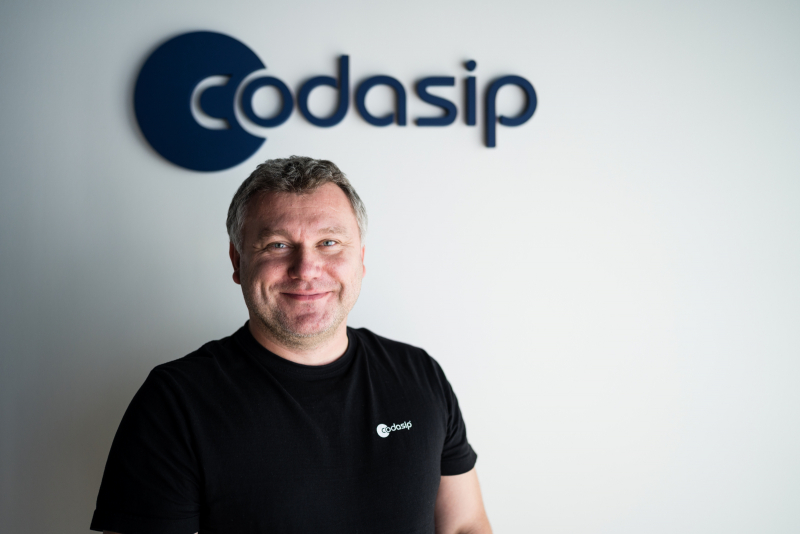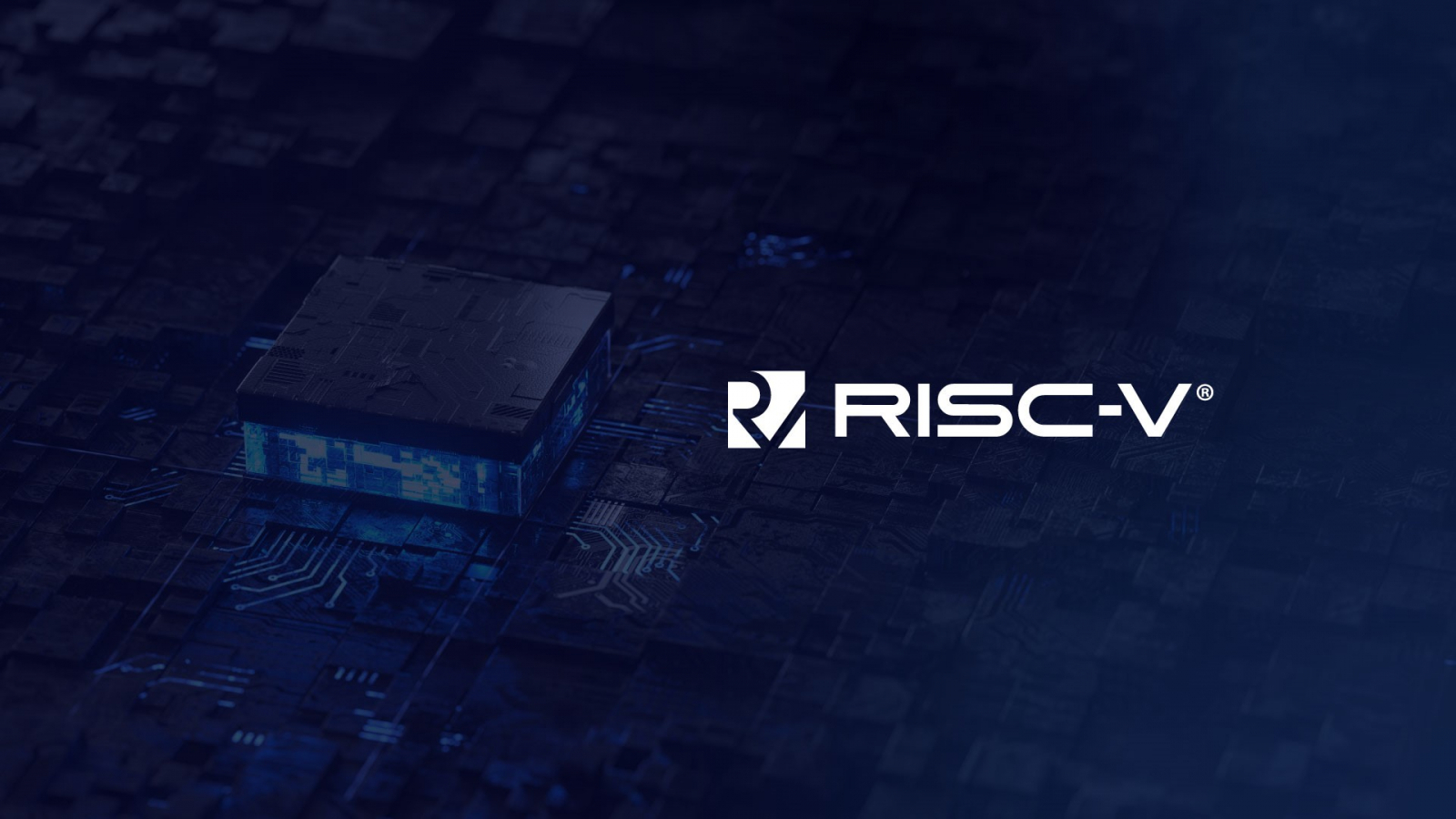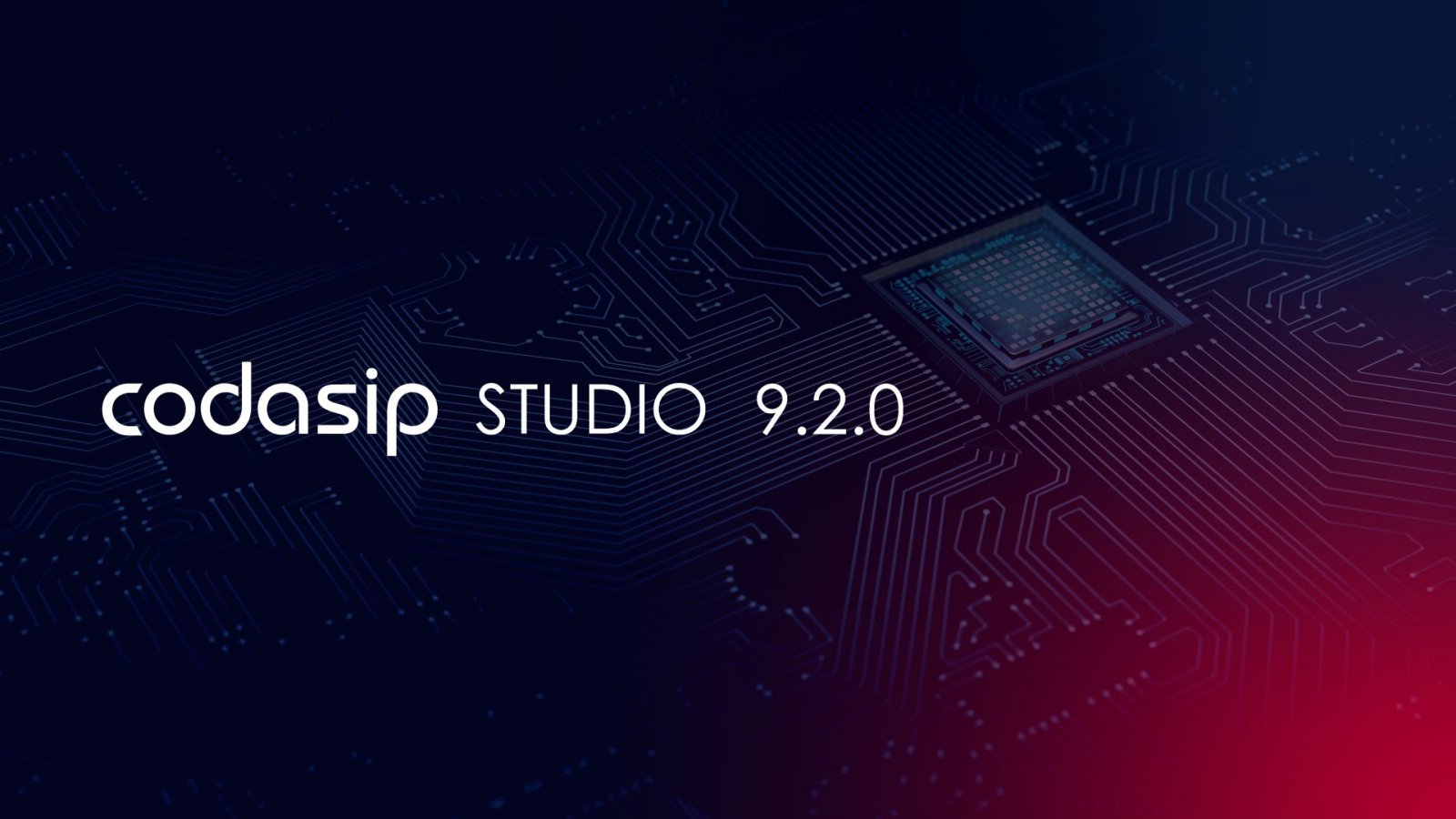People
Even in a highly competitive environment it is possible to build a successful global company, the founder of codasip Karel MAsařík tells students of BUT

Karel Masařík sensed the great potential of cooperation between industry and academia already as a student at Erasmus in Germany. He then developed it fully in his doctoral thesis, which decided his future direction. A graduate of the FIT (Faculty of Information Technology) BUT (Brno University of Technology), founded the company Codasip and started to supply the market with his own processor cores and software tool for processor design. Today, as a representative of the only European RISC-V company, he is participating in a debate with the European Commission on the assertion of European sovereignty in this area.
What was your journey to computer science? Was studying at the Faculty of Information Technology at the BUT an obvious choice for you?
As a child I played with electronic kits, and this then directed me to electrical engineering. There we had microprocessor programming, so software-hardware, and I enjoyed that. At that time, there was no faculty of computer science at the BUT, so I went to the FEEC (Faculty of Electrical Engineering and Communication), and there we had courses that were more focused on the design of digital circuits and microprocessors, digital signal processing and so on. This led me to computer science after the division of the faculty and the formation of FIT.
How did your idea of your future career shape in the study progress?
I used my knowledge of German and in my last year of studies I went on Erasmus to Hagen, Germany. In Germany, I was impressed by how industry can work closely with academia. I did my diploma thesis in cooperation with a Munich company and the topic was interesting for academia and at the same time practically applicable. Upon my return, I was looking for something where I could apply my German language skills as well as my knowledge of embedded systems in public transport, which was the focus of my diploma thesis. At that time, there was an Ikarus running on Kolejní, and in Germany they already had buses equipped with a system for announcing stops, transmitting information about the location to the central control room and controlling the traffic lights so that the bus would pass the green light. I was attracted by the fact that you can make more complex systems with a large team of engineers working on them. In 2005 I started working on my doctoral thesis on Hardware-Software Codesign in collaboration with an Austrian company that wanted to design processors and chips for automotive companies. My supervisor was professor Hruška (Tomáš Hruška, Institute of Information Systems, FIT) and we also involved other students of FIT. Initially, my role was not purely research, but partly managerial, because we needed to build a stronger team, and to do that we needed to get grants.
When was the company founded?
In 2013, we saw the potential in the market, but it was necessary to turn the activities into a more commercial phase. If you are dealing with partners who develop mobile phones, the faculty is a good research partner for them, but when it comes to specific products that you have to deliver under commercial conditions, including guarantees, then the functioning has to be set up a little differently. And so in 2014 we started a private company. The chip market is very conservative and it takes a long time to build a name for yourself. Codasip took about 8 years to build it up to be recognizable by partners, and this was not without investment. When you work with customers who make chips for commercial electronic products, you are part of the development chain, and if you fail, you can fundamentally delay the delivery of the customer's final product to market, which is unacceptable in a strategic industry like microelectronics. We knew that we needed to build a robust R&D team of about 100 engineers and that this required investment, which is primarily found in the private sector. So at the beginning of 2014, Czech investors with business experience joined the company. The initial capital allowed us to kick-start commercial development and to close several key commercial contracts with customers in Israel, Japan and the USA, which was crucial for us.
At that time, we were growing, not organically, but it wasn't the kind of expansion you know from American companies either. Until 2017, we only developed a tool to accelerate the design of processors. In 2017, the introduction of the RISC-V architecture began, which laid the foundation for our processor cores, which we started developing internally using our automation tool from this year. RISC-V is an open standard and ecosystem that holds the promise of a more secure future for many industries. It has enabled the large growth of companies that have tried to be competitors to ARM or Intel. At the same time, we've been leapfrogged by competitors who also make RISC-V processors, who have raised hundreds of millions of dollars in investment in the U.S., and who can develop competitive products with far more engineers and grow far more aggressively.

What is your innovation, i.e. what makes you different from your competitors?
It's the speed with which we can get more functionality into a very limited device in size and power. This can be a mobile phone, a car or a smart electronic box in your home. When you have something like complex software running on your PC or laptop, that's fine, but you'd like that little box you have stuck on the wall at home, powered by a small battery, to have the same or better functionality: to be able to talk too, ideally to understand you. Or for your car to be able to operate autonomously in urban traffic infrastructure and ideally have a full HD conference call over a 6G network while you drive.
This is now my new hobby – Internet of Cars. It integrates a lot of things in the car into a single chip, such as game infotainment features to keep the kids entertained with games while driving, 5/6G modems, remote car unlocking, and so on. And paradoxically, the power consumption of this chip is also very important because you are operating in different temperatures. The temperature is different in California than in Norway, and that piece of silicon behaves a little differently at different temperatures. So it's a concept like Tesla, where you have one chip and you try to get as much power into it as possible, as much complex software as possible and reduce the chip area and its power consumption as much as possible. We can do that thanks to the automation that was there at the beginning, thanks to the codesign of application-specific processors. So then “time to market”, if you can do something in six months instead of eighteen, is our advantage over the competition. The downside is that American companies have more private investment and Chinese companies get a lot of money from the government. We are now trying to straighten that out a bit with the EU Chip Act, where the EU is pushing for European sovereignty backed by public funding, which we are also combining with venture capital. Codasip, because of its ability to operate in different locations in Europe, is a partner in this EU Chip Act discussion, which is why I was also in Brussels last week, where we are forming something of a European “design flow” for chips with key European suppliers with the European Commission. Codasip has been invited as the only European RISC-V company to join this discussion, so politics will not be avoided either.
Less than a year ago, you recruited Ron Black, who until then had held the same position at Imagination Technologies, to fill the CEO position you had held since the company's inception.
Years ago I personally sold Ron one of our solutions that was important to his company. He was the CEO of Rambus at the time and we worked together to close the deal. We stayed in touch and last year I approached him saying that if he wanted to do something bigger in RISC-V, he had an opportunity with us. However, if the company was to continue to grow, it needed to reignite innovation, and so after Ron became CEO last winter, I was put in charge of a new baby, namely building Codasip Labs. It is not really a research organisation, but an innovation apparatus that we use to innovate in selected strategic areas and where there is close collaboration with universities and other commercial partners. It has four main areas: security, automotive, machine learning and a university programme. That's what collaboration with universities is all about, to explain to people that processor microarchitecture schematics are no longer drawn by hand, but are done more efficiently using automation tools, thus accelerating innovation.

How do you see the level of IT education at Czech universities in comparison with the world?
We started with students from FIT and FEEC, where the teaching model is very good. The students we work with have the knowledge we are looking for. Today, we create many new jobs in the field of security, so that someone doesn't hack your phone or car, and we can make good use of graduates of FIT at BUT or Masaryk University. What we lacked in Brno were experienced people who had designed processors before. So the software part was good, but to get our processors to a competitive level, we had to expand our research and development outside the country.
Is that why you set up development centres in Europe?
Yes. Today we have offices in the south of France, in Bristol, Cambridge, Barcelona, and now we have opened a development centre in Greece. There are a number of major companies in these locations that have been based there for more than twenty years and can shape universities. As a result, we have gained experienced talent who have worked for companies such as Apple, Nvidia, Imagination Technologies, and ARM. We import some of the knowledge and experience back so that the design centre in Brno has the potential to grow. Our students sometimes lack full context, the Czech Republic has no history in designing complex processor cores, so it is important that we have people in senior management or architectural positions who have worked in the industry and are able to shape students. This is the concept we are now using: we are finding talents, but we still have to train them. The company now has over 190 employees, mostly in Europe, 80 percent of whom are engineers.
How would you describe your company and its position in the global market?
I take it as an important message for students and graduates of BUT that it is possible to build a successful global company even in a very competitive environment. There are examples of very successful software companies, but it's harder in hardware, especially in Europe. This is not to say that we want to attract hardware students, everyone is important to us, and innovation is the most important thing: if you are committed to innovation, you can create something great and groundbreaking.
(janan)
Sensorie greenhouse wants to make growing vegetables at home the norm. It offers smart solutions for year-round harvesting
They wanted to teach English. In the end, they are "raising" new IT specialists and preparing a revolution in education
The brain is still a mystery to us
FIT BUT scientists are developing an app for psychotherapists. Using deep learning, they aim to analyse therapy sessions
Tomáš Dacík focuses on static analysis of programs. For his work he received the Brno Ph.D. Talent